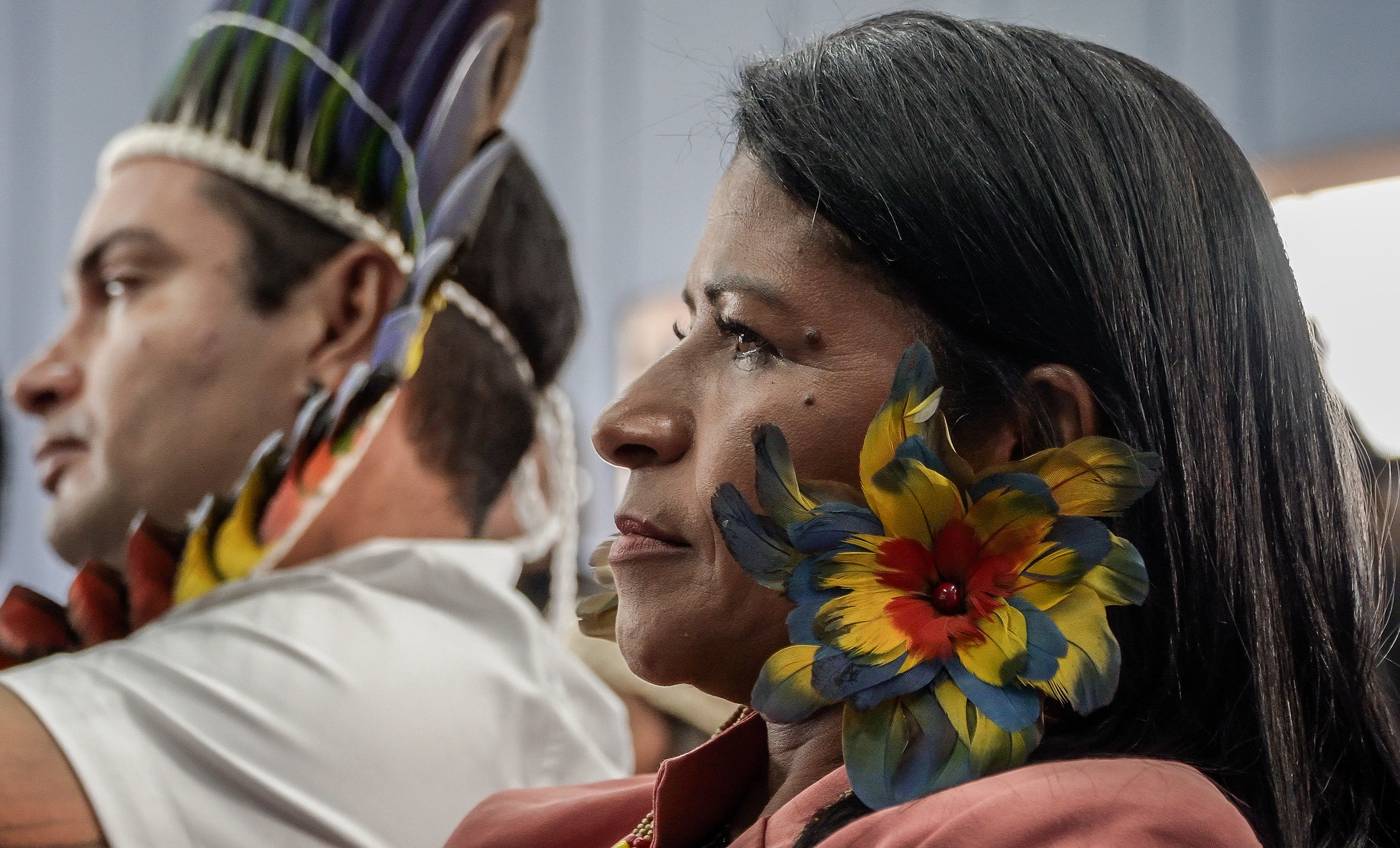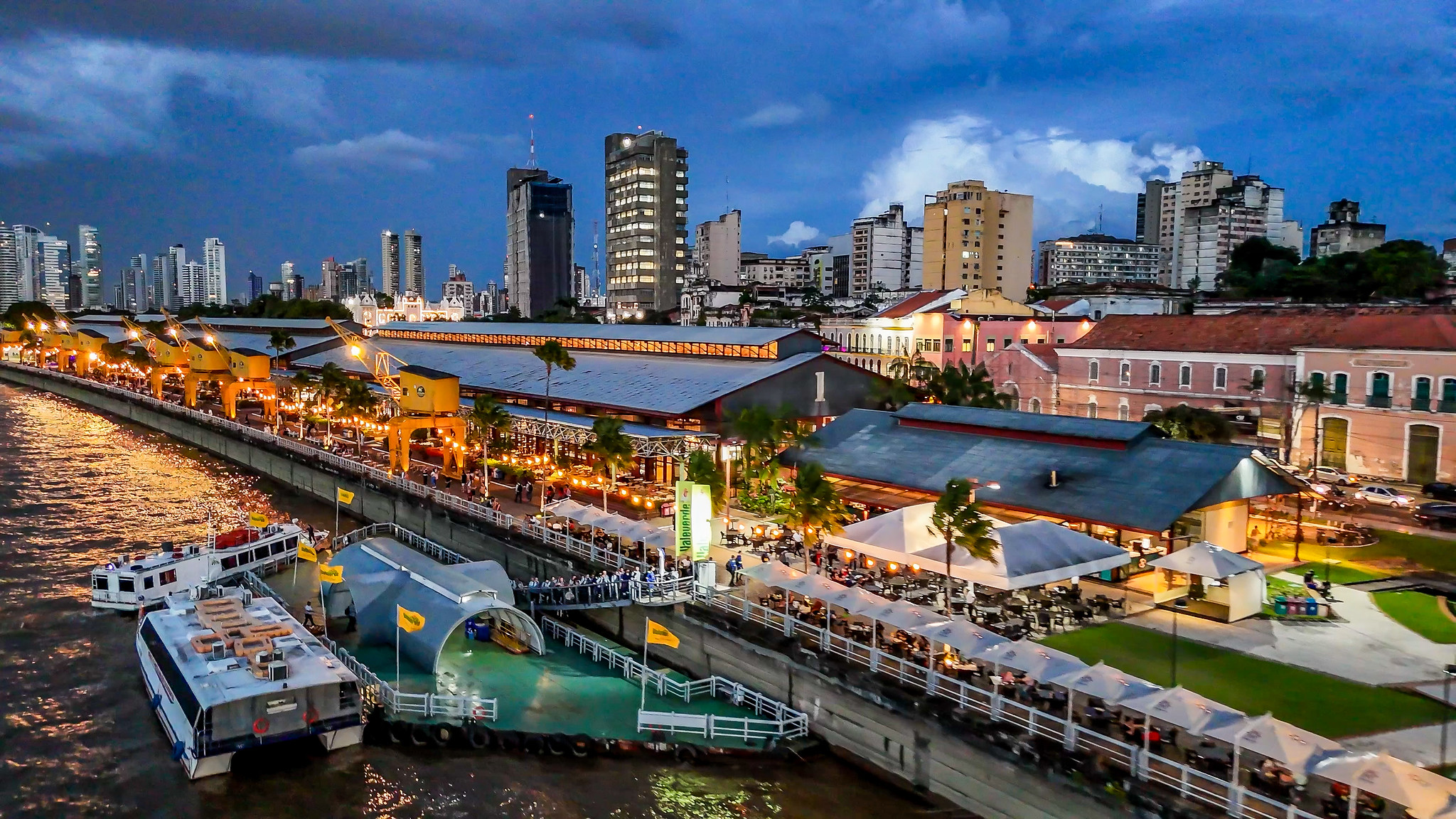
Training for COP30 for Indigenous Peoples. Photo: Rafa Neddermeyer/COP30 Brazil Amazon/PR
As the world’s leaders prepare to meet in Belém for COP30, the stakes could hardly be higher. This is poised to be among the most consequential climate summits since Paris — marking the 10-year anniversary of the Paris Agreement and the first to take place in the Amazon, the planet’s largest tropical forest. The challenge facing Brazil and all Paris Agreement signatories is clear: to turn promises into progress, showing how nature, finance, and adaptation can translate into measurable progress.
Launched today, new data from Nature4Climate’s NbS Commitment Tracker and Policy Tracker underline both the momentum and the gaps that negotiators will now confront: while new initiatives were launched, half of nature-related commitments have stalled; and only 32% of NbS policies include a clearly defined budget for implementation (see more below).
Together, they paint a picture of a world increasingly aware of nature’s role in meeting climate goals, but still struggling to align ambition, policy, and finance at the scale required. It’s this implementation gap that COP30’s agenda will have to confront head-on.
For COP30 High-Level Champion Dan Ioschpe, this is precisely the purpose of the new Climate Action Agenda. “Success in Belém will not come from announcing yet more promises but from making the existing landscape of commitments more effective and transparent,” he said. “Our role is to support, connect, and amplify what already exists.”
Read more
Related articles for further reading
Nature endures
Since COP29, 26 new nature commitments have been announced, according to the latest update from the N4C Commitment Tracker. This number is five times higher than the announcements made between the Dubai and Baku conferences. Yet, half of those that are more than six months old have reported progress this year — a slight dip from 52% last year, but still a sign of resilience in a turbulent geopolitical moment.
“Given the turbulence this year, we might have expected to see a decline,” said Lucy Almond, Chair of Nature4Climate. “The fact that progress has largely held steady suggests encouraging resilience — partly because NbS implementation is decentralized, cost-effective, and supported by a diverse base of actors.”
From a policy perspective, the latest edition of Nature4Climate’s Policy Tracker offers a snapshot of global progress, now documenting more than 1,500 policies across 190 countries. The analysis finds that only three in ten nature policies include a dedicated implementation budget—a sign that funding progress remains slow. Still, there are encouraging shifts: among this year’s 200 new entries, nearly 70% reference adaptation, and mentions of Monitoring, Reporting, and Verification (MRV) have doubled since 2024.
Together, these trends indicate that governments are beginning to move from ambition to implementation. But delivery will depend on three critical ingredients: credible budgeting, measurable outcomes, and strong social safeguards. With many NDCs still to come through, strengthening national policies and ensuring local actors have direct access to finance will be key to turning policy intent into measurable impact.
The Negotiation Landscape
Four themes linked to nature are emerging as central to COP30’s negotiations and parallel tracks: finance, adaptation, NDC ambition, and the Tropical Forests Forever Fund.
1. The Baku-to-Belém Roadmap: Turning Numbers into Reality
Agreed at COP29, the Baku-to-Belém Roadmap set an ambitious global climate finance target — $1.3 trillion per year, including $300 billion annually for developing countries by 2035.
In Belém, negotiators will face the harder task: making that finance real. This means defining not just who pays, but how funds will flow — and ensuring that developing countries and communities can access them. Brazil has been clear in its intent to make COP30 a “finance COP,” one that rebalances the system toward adaptation, nature protection, and locally led action.
2. Adaptation Steps Into the Spotlight
After years of lagging behind mitigation, adaptation is becoming a vital priority. Negotiators aim to operationalize the Global Goal on Adaptation with a more concrete framework that includes nature-based solutions and locally led indicators.
Recent updates from Nature4Climate’s Policy Tracker show that almost 70% of new national policies now include adaptation language: a sharp increase from last year, reflecting growing recognition that climate resilience and biodiversity recovery are inseparable.
As Brazil’s Ambassador Liliam Chagas put it in a recent Nature4Climate briefing, “COP30 must be a conference where climate action is guided by nature and built from the ground up — where local communities are not just participants, but decision-makers.”
3. The NDC Test
According to the UNFCCC’s NDC registry, 72 countries have submitted their new or updated climate plans — leaving roughly two-thirds of the world’s governments still to deliver, including several major emitters. This shortfall is expected to dominate early discussions in Belém.
The Nature4Climate Coalition is reviewing the latest national climate plans to assess how countries are integrating nature into their strategies. Early analysis shows that nearly 80% of the texts mention nature at least once – a 15% increase compared to the previous NDC cycle, with growing references to nature-based solutions in coastal zones and freshwater targets.
Yet critical gaps persist. Key ecosystems essential for mitigation and adaptation are being overlooked: peatlands appear in fewer than 4% of new plans, wetlands in just 21%, and timelines for measures such as deforestation bans remain scarce. Many commitments are also contingent on international financing, raising concerns about implementation and long-term certainty.
4. Tropical Forests Forever: A Test of Commitment
While not part of the formal negotiation tracks, the proposed Tropical Forests Forever Fund (TFFF) has quickly become one of the most closely watched initiatives heading into COP30. Backed by Brazil and a growing coalition of rainforest nations, the fund aims to create a permanent financing mechanism for tropical forest conservation — rewarding countries that keep deforestation low through long-term dividends.
A formal launch is expected in early November, following Brazil’s $1 billion pledge to seed the fund. The key question now is whether other nations will step up. The TFFF could redefine forest finance by shifting from short-term projects to a lasting trust model. Its progress in Belém will test whether the world is ready to back tropical nations not just with promises, but with predictable, recurring capital.
COP30 With Nature
The Nature4Climate coalition arrives in Belém with a united voice: there is no lasting climate or economic solution without nature.
At the heart of this message is the Nature Hub Pavilion, a two-week program in the COP30 Blue Zone hosted by 14 international organizations. The Hub will serve as a space for dialogue and collaboration, showcasing how diverse sectors can Lead, Invest, Adapt, and Grow With Nature — the four pillars guiding this year’s campaign.
- Lead with Nature: When nature guides, progress lasts. It is time for governments to lead with nature– by putting enabling policies in place and backing commitments with clear funding and implementation deadlines.
- Invest with Nature: When nature thrives, economies prosper. But to scale funding, we need a diverse set of solutions: blended finance, carbon markets, new facilities, debt swaps, and direct resources for the communities that steward nature.
- Adapt with Nature: When nature heals, life is protected. Nature is a frontline defense against climate and economic shocks. Smart leaders seize the opportunity to build resilience for the people, cities, and businesses that depend on it.
- Grow with Nature: When nature flourishes, prosperity takes root. Nature-based solutions are people-based solutions. Nature pays back in jobs, security, and prosperity for all. A new nature-positive economy is emerging, where healthy ecosystems grow alongside the communities. Empower local and Indigenous leadership to drive the new nature-positive economy. When nature flourishes, prosperity takes root.
A successful COP30 for nature would see governments mobilize at least $1.3 trillion annually through integrated finance strategies that align climate mitigation, biodiversity recovery, and land restoration. It would also mean replenishing the $1.7 billion pledge made at COP26 to secure community land rights, embedding NbS in new NDCs and NAPs, and advancing the Global Goal on Adaptation with locally led, nature-positive indicators.
More broadly, it would demonstrate that climate ambition can be durable, equitable, and grounded in science. As Brazil’s Ambassador Liliam Chagas has said, “COP30 must be a conference where climate action is guided by nature and built from the ground up — where local communities are not just participants, but decision-makers.”
> Read our full messaging document and collective policy asks here.
> You can also check the full Nature Hub Pavilion programme here.
A Pre-COP Season Like No Other
Brazil’s Presidency has called for a global mutirão — a collective effort that brings together national governments, Indigenous and local leaders, investors, businesses, and citizens. This whole-of-society approach has already begun to take shape in the months before the conference.
For the first time, a series of pre-COP events is unfolding across the host country, each engaging a different part of society. Though COP30’s Blue Zone doesn’t open until the 10th, leaders are expected on the ground early to mobilize momentum. In São Paulo, private sector dialogues are shaping pathways for finance and innovation; in Rio de Janeiro, subnational governments and local leaders are aligning climate plans. Meanwhile, Belém will host the high-level segment of COP30 a week earlier than usual, gathering heads of state for the World Leaders Summit.
These unprecedented pre-COP gatherings signal a new kind of energy: sectors and stakeholders are arriving not to set the agenda, but to advance it. It’s a sign that COP30 could be more about convergence than ceremony.

Construction for COP30 Brazil Amazon, in the city of Belém, Pará. Photo: Rafa Neddermeyer/COP30 Brazil Amazon/PR
COP30 and the Beginning of Nature’s Decade
In Belém, the world will gather not only to negotiate, but to collaborate — testing whether the climate process can evolve into something more inclusive, grounded, and durable. Ten years after the Paris Agreement, COP30 could mark the beginning of the next great chapter: Nature’s Decade.
Trends emerging in 2025 tell a complex but hopeful story. Commitments are multiplying, policies are becoming more measurable, and inclusion is improving. Yet finance, equity, and implementation remain the missing links. That’s why COP30’s action tracks — the Climate Action Agenda, NDC updates, and finance negotiations — must move together. Without finance, NDCs are hollow. Without clear policies, finance cannot flow. Without transparency, commitments lose credibility.
At the same time, a new understanding is taking root: that nature is not just a climate ally, but an economic one. Placing nature at the heart of development and investment strategies can drive inclusive growth, resilient supply chains, better health, and sustainable livelihoods — especially when local and Indigenous communities lead the way. By seeing nature as infrastructure for prosperity, governments and businesses can unlock the political, financial, and community support needed to scale action.
“COP30 is where we can prove that ambition and implementation don’t have to be separate conversations,” said Lucy Almond, Chair of Nature4Climate. “If governments, businesses, and communities align around nature, we can turn this into the decade where progress finally matches the promises.”
In Belém, the world has a chance to connect these dots — to turn the mutirão spirit into reality and show that when nature guides, progress lasts. It’s time for governments, businesses, investors, and all leaders to usher in a new era — one where climate action moves hand in hand with the protection, sustainable management, and restoration of natural ecosystems.
